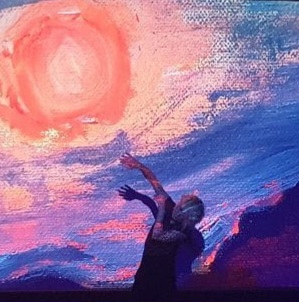
I have been teaching since I began to perform professionally in the mid 70’s. For me, teaching, alongside ones professional practice, is one and the same process. I do, therefore I teach.
Multidisciplinary Workshop
For professional or emerging performers. Students in Dance, Theatre, Music, and the fine arts who are curious about interdisciplinary collaboration.
Katie Duck is a renowned performer, teacher, and director known for her groundbreaking work in dance, music, theater, and performance art. Her multidisciplinary workshops are internationally respected for blending movement, sound, text, and visual elements in a deeply intuitive and experimental framework.
Each day begins with a warm up for the body
The central goal is to enhance real time composition skills and expand creative expression through:
-Physical improvisation
-Vocal/textual experimentation
-Sound and movement relationship
-Awareness of space, timing, and audience
-Collaborative ensemble work
While each workshop is shaped by the group’s experience and context, common elements include:
-Daily warm-ups that involve physical and vocal exercises to build presence and responsiveness.
-Improvisation scores (structured prompts or games) used to explore movement, voice, and interaction.
-Solo, duet, and group explorations using real-time composition principles.
-Interdisciplinary tasks, such as adding live music, text, or visual art to performance improvisations.
-Feedback & reflection sessions to refine awareness and artistic decision-making.
Katie’s teaching style emphasises:
-Intuition over impulse or technique
-Failure as a tool for discovery
-Humour
-Real-time decision making
-The body as an instrument of expression
-Listening (to sound, space, and others)
Notable Themes:
-The performer’s presence in the moment
-The role of chaos and order in creativity
-Feminist and political contexts in performance
-Autonomy and authorship in improvised work
Workshops are intense, playful, and laced with Katie Duck’s insistence to find humour in every dark corner of the work.